
Curious about toeless compression socks?
Diabetic? Athletic? Just need to control foot and ankle swelling?
Even if you don’t have a medical condition, open-toe compression socks can help improve your daily performance and athletic recovery.
Many people find toeless pressure socks to be more comfortable, easier to get on and more breathable than a full-coverage compression sock. Whether you’re an expectant mother or an athlete in training, there are tons of benefits to open-toe stockings.
Let’s talk about open-toe compression socks.
Ten Benefits of Wearing Open-Toe Compression Socks
On the market today, you’ll find a variety of open-toe compression socks to pick from. All open-toe compression stockings come with these core benefits:
1. You’ll Feel and See Improvements in Your Circulation
Your toeless compression stockings will noticeably enhance blood circulation. They are an excellent therapeutic tool for addressing an array of circulatory issues.
Open-toe compression socks combat the symptoms of diabetes, edema, pregnancy and long days of travel.
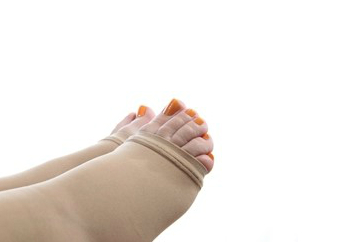
Healthy circulation has a ton of benefits:
- Lowered risk of blood clots.
- A healthier lymphatic system.
- Reduction of chronic leg pain.
- Less swelling in the feet and ankles.
- Fewer varicose veins and spider veins.
- Prevention of light-headedness or fainting.
2. You Can Travel in Warmer Climates Comfortably with Open-Toe Compression Sleeves
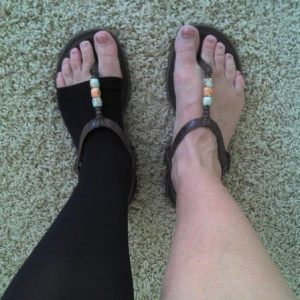
An open toe is a great feature, making these compression socks more breathable than a full-coverage pair of compression sleeves.
For long flights or train rides, open-toe compression socks can prevent blood clots while keeping you cool.
The open toe allows you to wear your summer footwear with ease, too. For travel, a pair of 20–30mmHg knee-high compression socks should do the trick.
If you have a significant medical diagnosis, check in with your doctor first to ensure that 20–30mmHg is the best pressure rating for you.
3. Open-Toe Knee-High Support Hose Men Prevent the Buildup of Lactic Acid
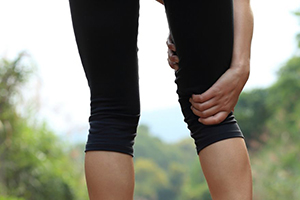
The lactic acid build-up is common during vigorous cardio activities. If you play sports or are a runner, open-toe compression sleeves may benefit you.
The pressure applied by the compression fabric is the key to preventing the buildup of lactic acid in your muscles.
Your compression stockings will also keep your blood well-oxygenated, ensuring muscles receive adequate oxygen to fuel your workouts.
For running, try the 15–20mmHg or 20-30mmHg open-toe compression hose offered by ComproGear.
4. Open-Toe Socks Don’t Put Excessive Pressure On the Toes

Some wearers find full-coverage compression socks to feel cramped around the toes.
This can be uncomfortable, limit movement and hold sweat between the toes.
The following circumstances are best addressed with open-toe compression socks:
- During post-sclerotherapy and post-surgery
- Hammertoes or bunions are present
- You wear a larger shoe size
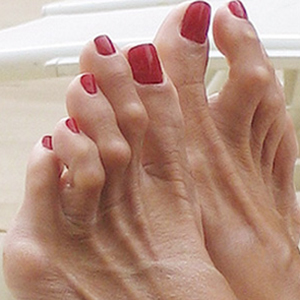
An ideal solution is to replace your regular compression socks with open-toe compression socks.
Open-toe socks allow you to freely move and wiggle your toes, giving you that extra bit of comfort.
You may find it’s easier to wear your knee-high or thigh-high compression socks for long periods of time with that open-toe freedom.
5. You Can Monitor Circulation and Temperature
If you have a condition that affects circulation in your extremities, your doctor may have asked you to regularly check your toes for signs of poor circulation. If this is the case, a toeless pair of compression socks will prevent you from needing to remove your socks every time you check your circulation.
Note:
Certain medical conditions like peripheral diabetic neuropathy may prohibit you from wearing compression socks altogether. If you are unsure if compression stockings are safe for you, check in with your doctor beforehand.
6. Open-Toe Compression Socks Are Ideal for Workouts
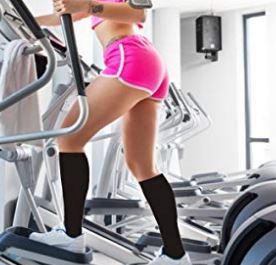
Just like with regular compression socks, open-toe compression socks and knee-high stockings can be worn during your workout to keep your muscles warm and to prevent light-headedness.
Toeless compression sleeves are a great option for activities that require grip without shoes such as yoga class, dance practices or stretching.
Be sure to keep a few pairs on hand so you can switch out used socks with a fresh, clean pair.
7. Thigh-High or Knee-High Open-Toe Compression Hose Can Be Used with a SIGVARIS Foot Slip
A Foot Slip is silk donning aid that eases the application of open-toe compression socks. It looks similar to a sock and can be placed over your foot just prior to putting on your compression stockings.
The Foot Slip reduces friction between the fabric of your compression sock and your skin, thereby easing the donning process. If you struggle to put on socks independently, consider adding a Foot Slip to your compression sock tool kit.
8. You Can Flaunt Your Pedicure
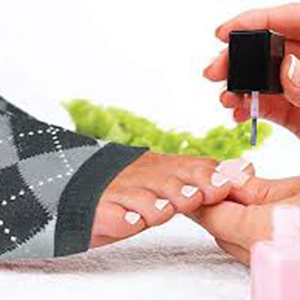
Since open-toe compression socks don’t cover your toenails, you can show off your pedicure and get some sunshine on our toes. Get into a summertime mood by pairing your socks with open-toe shoes or sandals.
9. Stylish Compression Socks Are Available
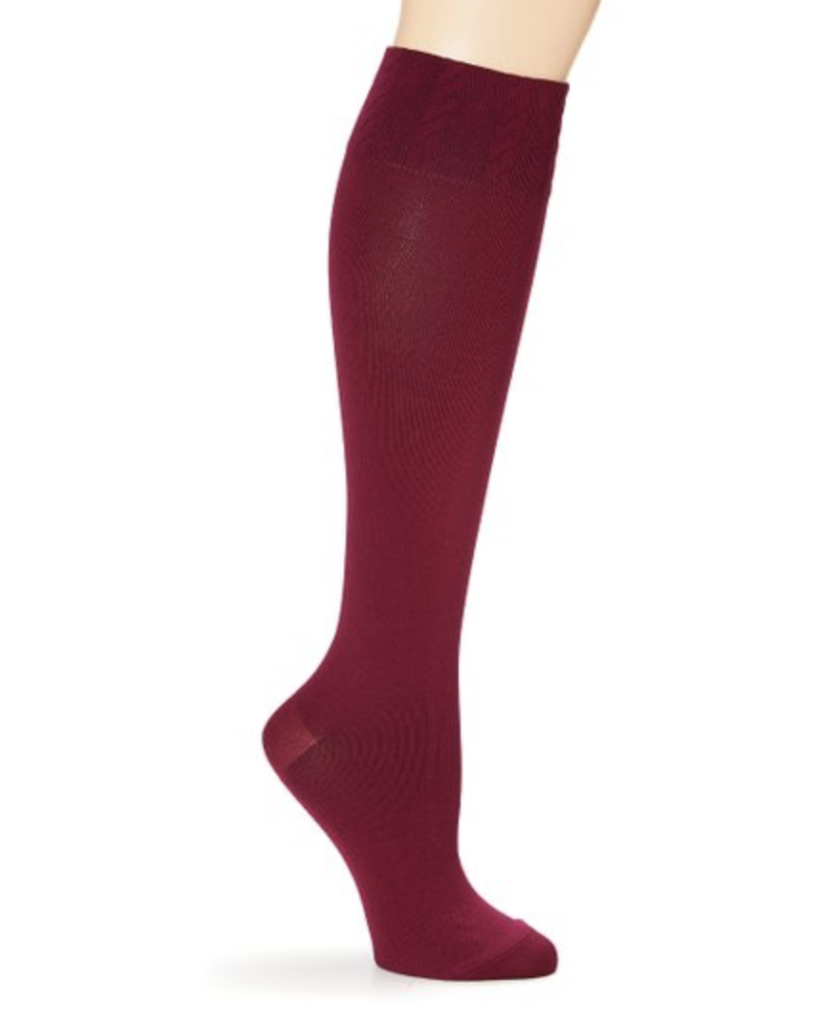
Gone are the days when compression socks were just white or nude. Yes, white toe-less pressure hose that match your casual beachwear are still available and so are semi-translucent dress stockings.
But now there is a variety of seasonal colors, fun patterns and neutral tones, too.
10. Anyone Can Benefit From Toeless Compression Socks
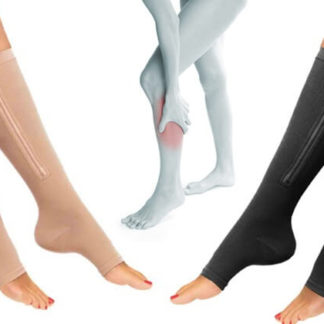
The truth is that open-toe compression socks are not just for pregnancy, illness and the elderly.
If you travel by plane, stand for extended periods of time at work or exercise, then a pair of compression socks is worth investing in.
Irrespective of your condition, there is a pair of compression socks out there that can make your day go smoother.
Top Features of Open-Toe Medical Compression Socks
When shopping for your open-toe pressure socks, invest in the highest quality. A combination of durability, comfort and effectiveness make the perfect compression sock.
The following are common features you will see in open-toe compression socks. You can choose the combination of features that suits you best:

- Flat Knit.
- Circular Knit.
- Non-Slip Calf.
- Anatomical Fit.
- Lightly Cushioned.
- Antimicrobial fabric.
- Breathable Material.
- Graduated Pressure.
- Shock Absorbent Heel.
- Comfortable Top Band.
- Seamless Open-Toe-Fit.
- Reinforced Stitching at Heel Pockets.
- Silicone Proximal Bands to Prevent Sliding.
- A Pressure Range of 15-20mmHg, 20-30mmHg or 30-40mmHg.
Designed with durability in mind, open-toe compression stockings are manufactured with a combination of nylon and elastane. This mixed composition fabric stands up to wear and tear, yet is stretchy enough to be pulled on over the foot.
Will the Band On the Foot Area Bind My Toes?
This is a commonly asked question about wearing open-toe compression socks.
The simple answer is no.
Even though the open-toe compression sock partially covers your foot, there is minimal pressure in the foot region. The majority of applied pressure in graduated compression socks begins at the ankle and continues up the leg. The band of fabric that ends the sock before your toes are stretchy as well, facilitating a comfortable fit.
Women’s Open-Toe Pressure Stockings

Open-toe stockings and hosiery are especially popular with women in business and office settings. You can easily find compression socks that look like daily-wear dress socks to match your attire.
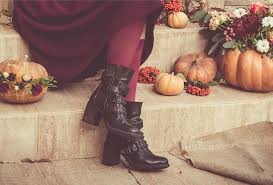
Stockings with open-toes and a range of compression ratings are available to pair with dresses, capris, and skirts.
Knee-high or thigh-high compression stockings are a nice alternative to a full set of compression pantyhose plus size as well.
You’ll feel less restricted, have greater flexibility of movement and will be able to wear them more comfortably during the warm summer months.
And if you’re a fan of pedicures, open-toe compression socks allow you to show off your nails. Plus, you can wear sandals or peep-toe footwear with toeless pressure sleeves–a plus during hot weather.
Popular Articles on ComproGear
Rose Toy Still How Toys are Made for Sexual Wellness
Best Compression Socks for Edema Give Yourself a Chance to Find a Pair that Decreases Swelling
Pressure Ratings for Compression Socks and Sleeves
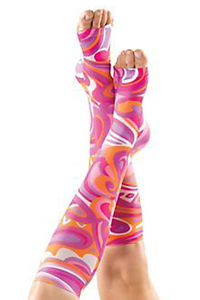
Toe-less knee-high or thigh-high compression hose are available in several ranges of pressure. Which pressure rating is right for you? Let’s find out.
You will find open-toe compression socks in Class 0, 1, 2 and 3 pressure ratings.
These correspond with mild, moderate, firm and extra-firm pressure application:
| Mild | Moderate | Firm | Extra-Firm |
| 15-20mmHg | 20-30mmHg | 30-40mmHg | 40-50mmHg |
Over-the-Counter, Class 0
Class 0 compression socks

Class 0 compression socks are available over-the-counter at many drug stores and do not require a prescription to access.
For mild pain, mild swelling or mild varicose veins, a pair of Class 0 open-toe compression socks may be enough.
They are currently available in the following pressure range:
- 15-20mmHg
Medical Class 1
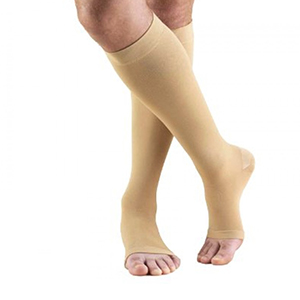
Class 1 compression socks with a pressure rating of 20-30mmHg are the most widely available type of open-toe compression sock.
They can often be purchased over-the-counter at your local drugstore and are available through ComproGear without the need for a prescription. This pressure rating is ideal for most wearers without a serious medical diagnosis.
If you have a circulatory condition such as diabetic peripheral neuropathy, first ask you, doctor, if this level of compression is safe for you.
U.S. Class 1 compression socks come in:
- Seamless: 20-30mmHg
Medical Class 2
U.S. Medical Class 2 compression stockings are prescribed for the management of severe varicose veins, severe edema, and severe deep vein thrombosis.
You will need a prescription from your physician before you can purchase a pair.
Open-toe compression socks in Class 2 are available in:
- 30-40mmHg
Medical Class 3
Class 3 compression stockings are prescribed for severe and chronic conditions such as chronic venous insufficiency or severe venous diseases. They are available in:
- 40-50mmHg
Understanding Sizing for Toeless Compression Socks

The design of open-toe compression stockings is the same for both men and women, though sometimes sizing will be gender-specific.
Below is a sampling of the calf measurements in inches, corresponding with the recommended size of compression sock:
| Small | Medium | Large | Extra-Large |
| 13 – 15.5 inches | 14 – 17.5 inches | 15 – 18.5 inches | 16 – 20 inches |
Measuring for Your Open-Toe Compression Hose:
Here are some great tips to keep in mind as you take your measurements:

- Grab a measuring tape made of a flexible material, such as a sewing measuring tape.
- Keep the sizing chart handy so you can see which size of sock your measurements align with.
- Write down each measurement as soon as a take it.
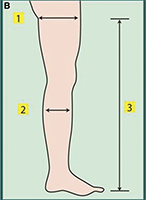
- Take the measurements in the morning hours, before your feet and ankles swell.
- It is preferable to stand while taking the measurements.
- Hold the tape directly against your skin as you measure.
- Avoid pressing the tape measure into the skin or stretching it.
- Don’t measure over the top of clothing. It is always better to roll up or remove the clothing.
How to Put On Open-Toe Compression Socks
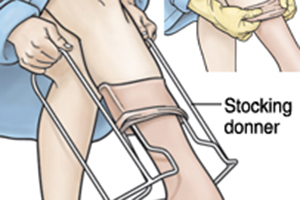

If you struggle to put your own socks on, many devices and methods have been created with you in mind.
From using rubber gloves to get the best grip to the Sigvaris Foot Slip to basic unrolling techniques, there is always a way to make your use of compression socks easy.
For the ultimate guide, check out ComproGear’s step-by-step guide to putting on compression socks.
Here are a couple of examples of popular stocking donner/doffer options:
Overall Benefits of Open-Toe Pressure Socks
Your open-toe compression sleeves can support you in so many parts of your life: work, health, sports, and leisure.
Let’s take one last look at the pros of open-toe stockings:

- Fight swelling and edema.
- Prevent blood clots and DVT.
- Support for pregnant women.
- Great for both cardio and gentle activities.
- 15-20mmHg and 20-30mmHg pressure stockings are ideal for running.
In addition, open-toe compression socks can be worn with sandals and allow for freer movement. If you prefer a less restrictive sock, knee-high or thigh-high open-toe compression stockings are right for you.
This page last updated November 5, 2022
